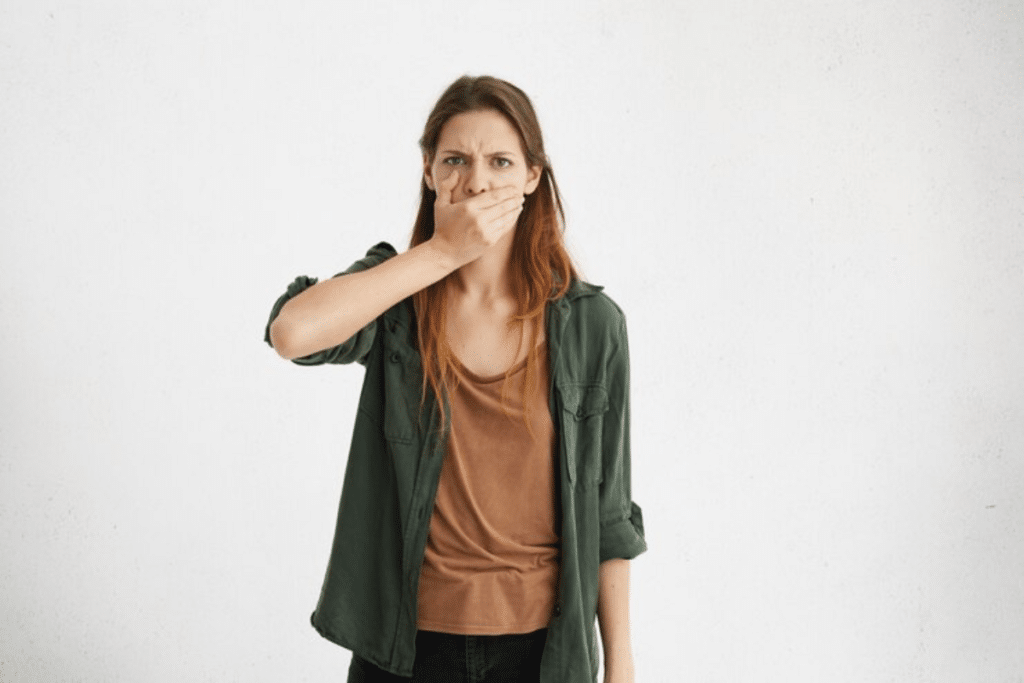Ever wonder why that awkward moment of silence hits right as you lean in for a conversation?
It might be bad breath, also known as halitosis, and let’s face it, it can be a real confidence crusher. But fear not! This blog is your breath-saving guide. We’ll be diving deep into the reasons behind bad breath, the tell-tale signs to watch for, and, most importantly, how to freshen things up for good.
Get ready to banish bad breath and breathe easy (and confidently) again! Here, you’ll find out everything you need to know about what causes bad breath, how to identify it, and most importantly, how to treat it effectively. So ditch the mints and mouthwash – let’s tackle bad breath at its source!
What Should You Know About Bad Breath?
Bad breath occurs when unpleasant odors emanate from the mouth. Various factors contribute to this condition, and understanding them helps in effective management.
Common Causes:
- Poor Oral Hygiene: Irregular brushing and flossing allow food particles to linger, leading to bacterial growth.
- Diet: Foods like garlic, onions, and spicy dishes can cause temporary bad breath.
- Dry Mouth: Saliva cleanses the mouth. Reduced saliva production leads to odor-causing bacteria accumulation.
- Tobacco Products: Smoking and chewing tobacco leave chemicals that cause bad breath.
Understanding these causes helps prevent and manage bad breath effectively.

Common Symptoms Associated With Bad Breath
Recognizing the symptoms of bad breath early can help you seek timely treatment and avoid social discomfort.
Key Symptoms:
- Unpleasant Odor: Persistent bad smell from the mouth.
- Dry Mouth: Reduced saliva flow can indicate potential bad breath.
- Bad Taste: Metallic or sour taste in the mouth.
- Coating on Tongue: White or yellowish coating on the tongue.
If you notice these symptoms, it’s essential to address them promptly to maintain oral health and confidence.
Diagnosing Bad Breath
Accurate diagnosis is crucial for effective treatment. Dentists use various methods to diagnose the underlying causes of bad breath.
Diagnostic Methods:
- Physical Examination: Checking the mouth, teeth, gums, and tongue.
- Halimeter Test: Measures the levels of sulfur compounds in the breath.
- Oral Microbiome Test: Analyzes bacterial composition in the mouth.
These methods help identify the root cause, enabling targeted treatment.
Common Treatments for Bad Breath
Treating bad breath involves both professional dental care and home remedies. Here are some effective treatment options.
Professional Dental Care:
- Regular Cleanings: Dentists perform thorough cleanings to remove plaque and tartar.
- Treating Infections: Addressing gum disease and tooth decay that cause bad breath.
- Mouth Rinses: Prescription mouthwashes to reduce bacterial buildup.
Home Remedies:
- Brushing and Flossing: Brush twice daily and floss to remove food particles.
- Hydration: Drink plenty of water to keep the mouth moist.
- Mouthwash: Use antibacterial mouthwash to kill odor-causing bacteria.
Combining professional care with diligent home hygiene ensures effective bad breath management.
Dietary Considerations
Diet plays a significant role in managing bad breath. Certain foods can help keep your breath fresh, while others should be avoided.
Foods to Include:
- Fresh Fruits and Vegetables: Crunchy fruits and veggies like apples and carrots help clean teeth.
- Herbs: Parsley, mint, and cilantro can neutralize odors.
- Water: Hydrates the mouth, reducing bacterial growth.
Foods to Avoid:
- Garlic and Onions: Known for causing lingering odors.
- Sugary Foods: Promote bacterial growth leading to bad breath.
- Alcohol: Dries out the mouth, creating a favorable environment for bacteria.
Adjusting your diet can significantly impact your breath quality.
When to See a Dentist?
While home remedies can help manage bad breath, persistent or severe cases require professional intervention. Here are signs that indicate the need for a dentist visit.
Signs to Watch For:
- Chronic Bad Breath: If it persists despite good oral hygiene.
- Pain or Swelling: Could indicate an underlying dental issue.
- Dry Mouth: Persistent dry mouth may need professional evaluation.
Consulting a dentist ensures comprehensive care and effective solutions for bad breath.
Bad breath, though common, can impact your social and professional life. Understanding its causes, recognizing the symptoms, and seeking appropriate treatment are essential steps to managing and preventing this condition. Implementing good oral hygiene practices, making dietary adjustments, and consulting a dentist in Richmond when necessary, can help you maintain fresh breath and boost your confidence. Remember, maintaining oral health is key to overall well-being.




